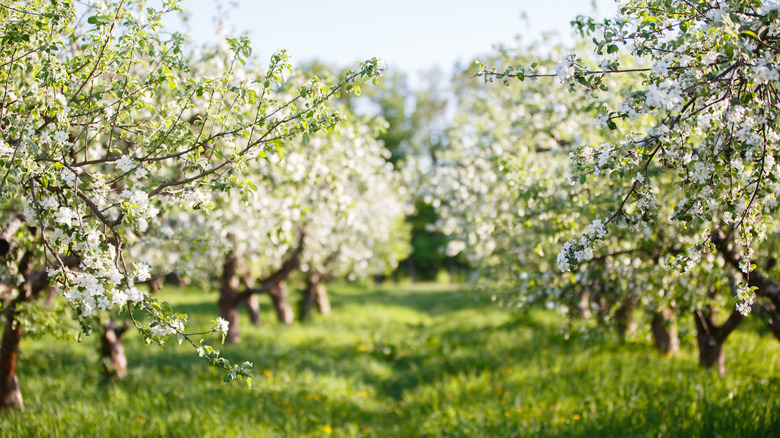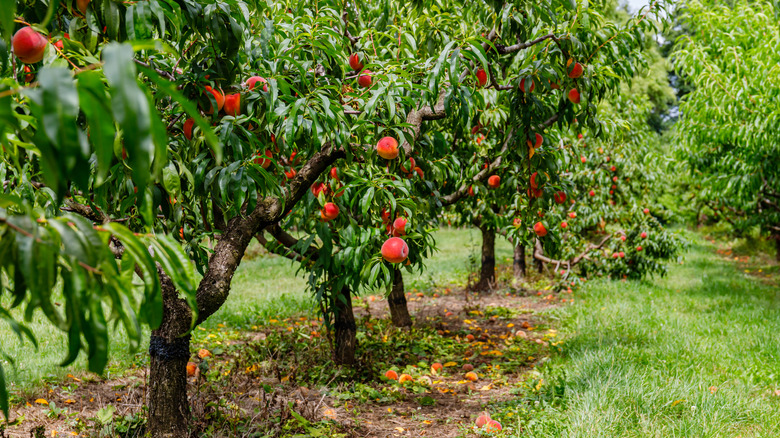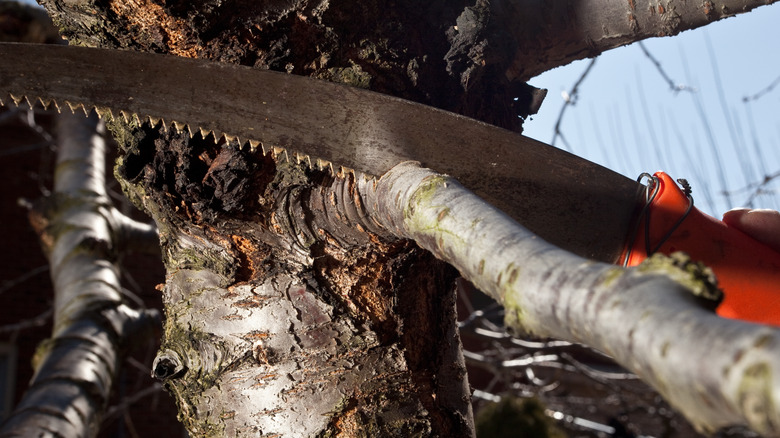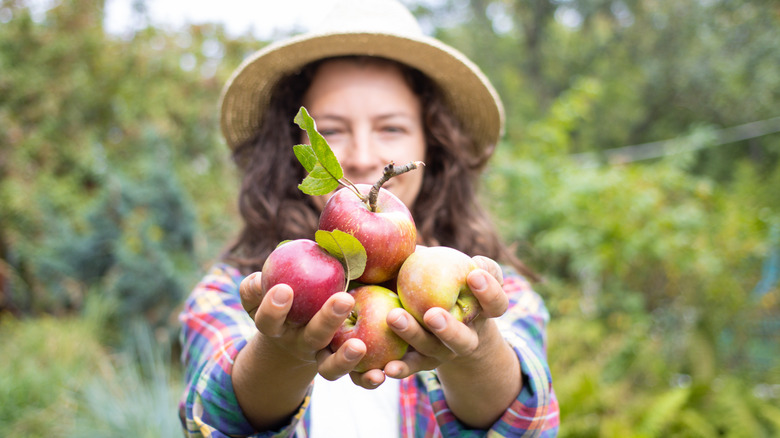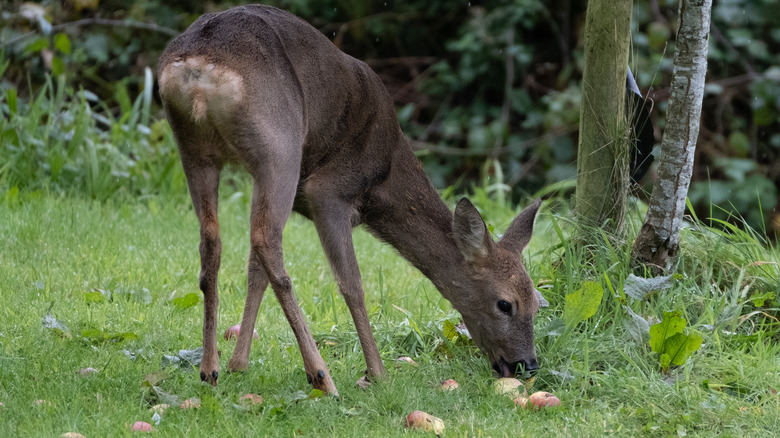Ideas On How To Use An Old Orchard
Large orchards were once a common sight in many areas of the country. As new methods of growing fruit have become popular, older orchards that were once thriving businesses are cut down, abandoned, or sold to new property owners. If you're fortunate enough to own an old orchard, there are many ways to enjoy it, and even some practical benefits. Whether you decide to try and grow fruit or not, old orchards have many natural and aesthetic benefits for your landscape.
What to do with your old orchard depends in part on how large it is. If it's fewer than six trees — known as a mini-orchard — it wouldn't be difficult to rejuvenate the trees and get them producing again, if you want to. If you have a large orchard, and the trees are relatively healthy, you have a number of options, including leasing your orchard to someone who wants to grow and sell the fruit. Alternatively, consider creating an arbor and seating area in your orchard, for a relaxing little oasis where you can listen to birdsong and enjoy the sights and sounds of nature.
Some fruits are better suited to specific climates and locations. While there are many cold-hardy peach varieties grown in New York, New Jersey, and Massachusetts, most fresh-eating peaches are grown further south, particularly in Georgia and South Carolina. But, every state has fruit orchards, and in many areas, fruit is a mainstay of local agriculture and a thriving economy.
What kind of orchard do you have?
Apples, pears, peaches, nectarines, apricots, and cherries are the most common trees grown in orchards. Apple trees were once very common across the Northeast and in the Midwest, and cider was the beverage of choice for many Americans. This is one reason why John Chapman, aka Johnny Appleseed, was such a visionary — and smart entrepreneur: he traveled west ahead of new settlements, planting trees so that he could sell saplings to new arrivals. Because of this tradition of growing apples to make cider, many older homesteads have the remnants of old orchards.
With hard cider becoming popular across the US, cider-makers are looking to grow good cider apples, which are often imported from France. Maybe you'll decide to invest in a cider press! If you decide you want to make your old orchard productive, you'll want to do some reading up on how to care for your apple trees. Most newer orchards consist of dwarf and semi-dwarf trees, which produce a maximum of fruit for a small space. These trees are often newer hybrid fruit varieties, bred for disease and pest resistance. Older orchards tend to be more sprawling, with large trees pruned to have plenty of low limbs for easy access to fruit. These older cultivars have declined in popularity, but there's been renewed interest in heirloom fruits and vegetables in recent years.
Rejuvenating old fruit trees
The main task involved in rejuvenating old fruit trees is pruning, which is basically strategic trimming and removing of branches. This helps the tree direct its energy to fruit production, which tends to decrease when trees get older and overgrown. Pruning is best done in late autumn, though you can trim small branches — no bigger around than your thumb — at any time. Fruit woods produce fragrant smoke and are excellent for burning in fires, cooking, and smoking, so your trimmings are worth hanging onto.
Even if your tree looks dead, as long as it has branches that still have blossoms and leaves, it can be coaxed to produce fruit. In addition to pruning, examine the roots of your trees. If the roots are exposed, or covered in thick grass or weeds, clearing the base of the tree and adding some fresh soil can help improve its health. Resist the temptation to add fertilizer, which can scorch the roots. Adding fresh soil and watering the base of the tree regularly during times of drought will help improve its condition. You can also add a layer of organic mulch to preserve moisture.
If your orchard is overgrown with other plants, check to see if invasive vines (such as bittersweet, wild grapevine, or Virginia creeper) are wrapping around your fruit trees. These parasitic vines can eventually kill trees, so removing them is crucial, however, using herbicides near fruit trees is definitely not recommended.
Practical uses for an old orchard
If your orchard produces more fruit than you need, you can look into selling the fruit. While most commercial orchards use sprays and other methods to produce perfect, blemish-free apples, plenty of people would appreciate organic apples to eat or bake with — check into the rules of your local farmers market.
If you have a large old orchard with plenty of life left in it, you could consider leasing all or part of the orchard to a farmer who wants to grow and sell fruit. This can be a beneficial arrangement, in which you lease the land to an experienced grower who will in turn care for and maintain the orchard and return it to health. You can even arrange to keep some of the fruit once the orchard is producing again.
Check local garden and horticulture groups and post a notice announcing orchard land in need of rehabilitation and an offer to lease it to an aspiring orchardist. There are more people out there interested in these opportunities than you might think! You'll want to make sure any arrangement is legally sound and look into any insurance requirements for such an arrangement.
Orchard wildlife
Maybe you want your old orchard to just go on being its beautiful self, putting forth fragrant blossoms in spring, creating a green haven for insects in summer, and producing apples in the fall for wandering deer. Old orchards are hubs of biodiversity, much more so than micro-orchards devoted to dwarf trees that tend to be short-lived. The complexity of wildlife in an old orchard is truly a nature-lovers paradise, a home to birds, mammals, and insects, not to mention wildflowers and fungi. Old orchards are also favored by beekeepers, as apple blossom honey has a delightfully sweet taste.
Even if you want your orchard to be a hub for wildlife, you can and should still do a bit of maintenance. Occasional mowing of meadow grasses can help keep the proliferation of weeds in check. You can mow walking paths through the orchard and around the trees, to provide access for picking fruit. Fallen fruit tends to rot, attracting insects, and can be slippery to step on, so you can rake it into a pile out of the way. Deer will eat rotting apples, and might get a bit tipsy from the fermentation!
Old orchards are growing more rare these days, and that makes them worth preserving. Keeping an old orchard vibrant can be a satisfying act of nature stewardship, benefiting wildlife and communities, as well as the land itself, and the trees that still have plenty to give.
